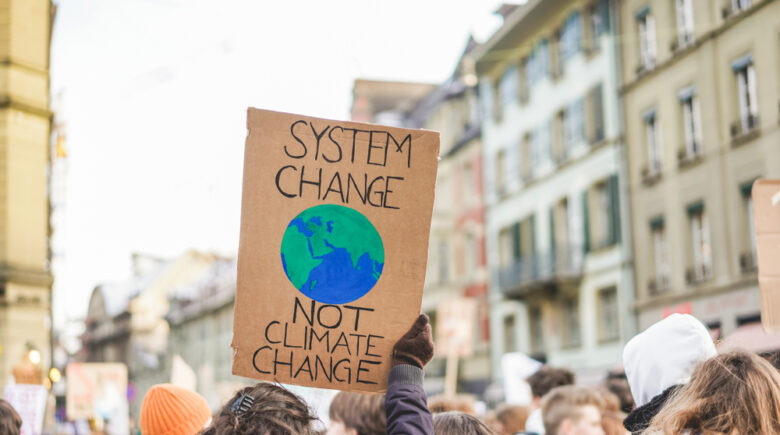The climate system is made up of four main components: the atmosphere, lithosphere, cryosphere, and hydrosphere. These components often interact with each other by exchanging carbon dioxide, water, and energy, which ultimately determine the normal climatic patterns we experience. However, there are times when normal climatic patterns are disrupted due to various factors introduced into the climatic system, either naturally or through human activities, causing different effects. Here are some recent mind-blowing observations about climate change that scientists have discovered.
2023 Was the Hottest Year in History
In 2015, a summit was held in Dubai with representatives from about 195 nations to discuss how to address climate change. During the summit, the nations agreed that the threshold limit for global warming would be 1.5 °C. The aim of this limit was to encourage countries to take action to reduce global warming levels. In recent years, the global warming rate has been below 1.5 °C. However, the Goddard Institute of Space, NASA’s research center in New York, reported that temperature began to rise dramatically, and the summer of 2023 was among the hottest seasons since records began in 1880. Later, reports by Al Jazeera and other sources confirmed that global warming had surpassed the 1.5 °C limit in 2023. It was also discovered that temperatures continued to increase, with January 2024 being the hottest period yet compared to other years.
As global warming reaches 1.5 °C, scientists warn that we should expect more extreme weather events. The world will likely experience worsening droughts and warmer ocean waters, leading to an increase in the frequency of hurricanes.
Hot Weather May Cause the Earth’s Oldest Ice Sheet in Antarctica to Melt, Posing a Threat to Global Flooding
The Antarctic ice sheet is one of the largest glaciers, covering an area of about 14 million square kilometers. Scientists have discovered evidence from a 2,000-foot-long ice core that shows the West Antarctic ice sheet shrank suddenly around 8,000 years ago. Eric Wolf, a scientist from Cambridge, suggests that given the extreme rise in temperatures, there is a high possibility that the ice will shrink once again, and if it does, it will happen very rapidly. This would result in a rise of sea levels by approximately five meters, causing catastrophic effects on coastal towns and cities all over the world.
The West Antarctic ice sheet has always been highly susceptible to the effects of climate change. Therefore, combating climate change and refraining from activities that contribute to global warming are the most effective ways to prevent the melting of this glacier.
Concentrations of Carbon Dioxide and Other Greenhouse Gases Continue to Rise
According to research, the greenhouse effect is the leading cause of climate change. The greenhouse effect occurs when greenhouse gases, such as methane and carbon dioxide, are released into the atmosphere in large amounts.
Before the industrial era, the level of carbon dioxide in the atmosphere remained stable at 280 ppm throughout history. However, by 2020, this level had increased by approximately 50% to 413.2 ppm. The main reason for this increase is the higher carbon dioxide emissions by various countries, with China and the United States being responsible for the highest percentage of emissions at 29.18% and 14.02%, respectively.
Greenhouse gases are the primary cause of the earth’s warming, as they trap heat near the surface, leading to increased temperatures in the atmosphere. The more greenhouse gases are released into the atmosphere, the hotter the earth’s atmosphere becomes.
Women Could Be the Key to Combating the Climate Crisis
Climate change has a disproportionately negative impact on vulnerable people, and women are among the most susceptible. The United Nations Environment reports that up to 80% of people displaced by climate change are women. Moreover, women in developing countries are often forced to travel long distances to access basic necessities such as water and food due to climate change-induced droughts. Despite being the most affected, women have limited representation in discussions and planning related to mitigating climate change. As a result, most of the efforts made so far to deal with climate change have mainly involved men. Therefore, empowering women through education and involving them in decision-making processes can play a significant role in reducing the impact of climate change.
Ocean Warming Is Happening at an Alarming Rate
Over the past decade, the earth’s oceans have absorbed approximately 90% of the heat generated by greenhouse gases. The US National Oceanic and Atmospheric Administration has reported that the temperature of the upper few meters of most oceans has increased by around 0.13 °C per decade over the past 100 years. The high temperature has led to ocean warming, resulting in varying adverse effects on the ecosystem. For starters, it has caused an increase in sea levels due to thermal expansion. It has also affected the breeding ground for marine fishes and coral bleaching. Without the implementation of effective strategies to reduce ocean warming, even more severe consequences are expected to occur.
Climate Change Greatly Affects the Economy
Climate change poses a significant threat to the economy in several ways. For starters, extreme weather caused by climate change can destroy property and infrastructure, leading to significant economic losses. Also, climate change can affect various sectors that are essential for the economy, such as agriculture, fisheries, and tourism, through droughts and floods. In addition, power generation can be hindered due to the drying up of water supplies.
Jeremy Martinich and Allison Crimmins conducted research on the potential economic impact of climate change in the United States. Their study revealed that if the temperatures increase by 2.8°C and 4.5°C from the pre-industrial level, climate change would disrupt 22 different sectors of the economy and cost around $520 billion annually for a 4.5 °C temperature increase and $224 billion less for a 2.8°C temperature increase. Another study by Morgan Stanley indicates that climatic disasters have already cost North America approximately $415 billion over the past few years.
The climate system is made up of four main components: the atmosphere, lithosphere, cryosphere, and hydrosphere. These components often interact with each other by exchanging carbon dioxide, water, and energy, which ultimately determine the normal climatic patterns we experience. However, there are times when normal climatic patterns are disrupted due to various factors introduced into the climatic system, either naturally or through human activities, causing different effects. Here are some recent mind-blowing observations about climate change that scientists have discovered.
2023 Was the Hottest Year in History
In 2015, a summit was held in Dubai with representatives from about 195 nations to discuss how to address climate change. During the summit, the nations agreed that the threshold limit for global warming would be 1.5 °C. The aim of this limit was to encourage countries to take action to reduce global warming levels. In recent years, the global warming rate has been below 1.5 °C. However, the Goddard Institute of Space, NASA’s research center in New York, reported that temperature began to rise dramatically, and the summer of 2023 was among the hottest seasons since records began in 1880. Later, reports by Al Jazeera and other sources confirmed that global warming had surpassed the 1.5 °C limit in 2023. It was also discovered that temperatures continued to increase, with January 2024 being the hottest period yet compared to other years.
As global warming reaches 1.5 °C, scientists warn that we should expect more extreme weather events. The world will likely experience worsening droughts and warmer ocean waters, leading to an increase in the frequency of hurricanes.
Hot Weather May Cause the Earth’s Oldest Ice Sheet in Antarctica to Melt, Posing a Threat to Global Flooding
The Antarctic ice sheet is one of the largest glaciers, covering an area of about 14 million square kilometers. Scientists have discovered evidence from a 2,000-foot-long ice core that shows the West Antarctic ice sheet shrank suddenly around 8,000 years ago. Eric Wolf, a scientist from Cambridge, suggests that given the extreme rise in temperatures, there is a high possibility that the ice will shrink once again, and if it does, it will happen very rapidly. This would result in a rise of sea levels by approximately five meters, causing catastrophic effects on coastal towns and cities all over the world.
The West Antarctic ice sheet has always been highly susceptible to the effects of climate change. Therefore, combating climate change and refraining from activities that contribute to global warming are the most effective ways to prevent the melting of this glacier.
Concentrations of Carbon Dioxide and Other Greenhouse Gases Continue to Rise
According to research, the greenhouse effect is the leading cause of climate change. The greenhouse effect occurs when greenhouse gases, such as methane and carbon dioxide, are released into the atmosphere in large amounts.
Before the industrial era, the level of carbon dioxide in the atmosphere remained stable at 280 ppm throughout history. However, by 2020, this level had increased by approximately 50% to 413.2 ppm. The main reason for this increase is the higher carbon dioxide emissions by various countries, with China and the United States being responsible for the highest percentage of emissions at 29.18% and 14.02%, respectively.
Greenhouse gases are the primary cause of the earth’s warming, as they trap heat near the surface, leading to increased temperatures in the atmosphere. The more greenhouse gases are released into the atmosphere, the hotter the earth’s atmosphere becomes.
Women Could Be the Key to Combating the Climate Crisis
Climate change has a disproportionately negative impact on vulnerable people, and women are among the most susceptible. The United Nations Environment reports that up to 80% of people displaced by climate change are women. Moreover, women in developing countries are often forced to travel long distances to access basic necessities such as water and food due to climate change-induced droughts. Despite being the most affected, women have limited representation in discussions and planning related to mitigating climate change. As a result, most of the efforts made so far to deal with climate change have mainly involved men. Therefore, empowering women through education and involving them in decision-making processes can play a significant role in reducing the impact of climate change.
Ocean Warming Is Happening at an Alarming Rate
Over the past decade, the earth’s oceans have absorbed approximately 90% of the heat generated by greenhouse gases. The US National Oceanic and Atmospheric Administration has reported that the temperature of the upper few meters of most oceans has increased by around 0.13 °C per decade over the past 100 years. The high temperature has led to ocean warming, resulting in varying adverse effects on the ecosystem. For starters, it has caused an increase in sea levels due to thermal expansion. It has also affected the breeding ground for marine fishes and coral bleaching. Without the implementation of effective strategies to reduce ocean warming, even more severe consequences are expected to occur.
Climate Change Greatly Affects the Economy
Climate change poses a significant threat to the economy in several ways. For starters, extreme weather caused by climate change can destroy property and infrastructure, leading to significant economic losses. Also, climate change can affect various sectors that are essential for the economy, such as agriculture, fisheries, and tourism, through droughts and floods. In addition, power generation can be hindered due to the drying up of water supplies.
Jeremy Martinich and Allison Crimmins conducted research on the potential economic impact of climate change in the United States. Their study revealed that if the temperatures increase by 2.8°C and 4.5°C from the pre-industrial level, climate change would disrupt 22 different sectors of the economy and cost around $520 billion annually for a 4.5 °C temperature increase and $224 billion less for a 2.8°C temperature increase. Another study by Morgan Stanley indicates that climatic disasters have already cost North America approximately $415 billion over the past few years.



